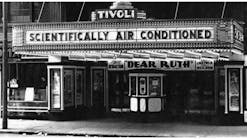In 1995, the Federal Energy Management Program recommended the use of polarized refrigerant oil additives (PROA) in HVACR equipment in all federal facilities. The following year came scientific studies such as an Oak Ridge National Laboratory report showing negligible improvement in the performance of a refrigeration compressor treated with PROA and run in a steady-state condition (no cycling) for nine days. Subsequent reports by the Electric Power Research Institute and others showed similar results. Then, in 2005 came a National Institute of Standards and Technology study linking additive viscosity to the enhancement of pool boiling and improvement of heat transfer. Fortunately, all of the major studies agreed the addition of PROA did little or no harm to equipment.
Today, there are a number of second-generation synthetic refrigeration additives (SRAs) that result in a measurable increase in efficiency (and, as with PROA, a reduction in sound-pressure levels). The idea behind them is relatively obvious: Oil fouling of coil walls—that is, the buildup of a film of contaminated oil (which has relatively poor thermal conductivity) on the heat-transfer surfaces of HVACR systems—retards heat transfer and results in a decrease in overall efficiency. That film is a result of oil and refrigerant (both miscible and immiscible with oil) mixing under pressure and temperature. In addition to degraded heat transfer, the result is reduced oil viscosity, which reduces lubrication effectiveness. If oil fouling is not mitigated, it can continue to accumulate, further reducing system performance. Adding a SRA to refrigerant removes oil film and prevents further fouling, restoring lost efficiency.
Although most or all of the commercially available SRA products on the market today act as catalysts (i.e., they reduce oil fouling without undergoing any permanent chemical change), they can differ significantly in chemical composition and molecular action. For example, some of them contain solids, such as polytetrafluoroethylene (PTFE), while others emphasize their lack of solids. One of the commercial products with which I am very familiar is Cold-Plus.
Cold-Plus is a blend of oil, an etching agent, a bonding agent, and finely milled PTFE. It requires a one-time installation. The manufacturer claims it is compatible with all current refrigerants and refrigerant oils. It contains no chlorinated or sulfonated compounds, so it is advertised as environmentally friendly. Our firm had the opportunity to test Cold-Plus in a 15-screen South Florida movie theater. The test was conducted in a 139-seat auditorium served by a 3-year-old 17.5-ton rooftop unit (RTU). The results, after normalization for weather, showed a reduction in average power consumption of approximately 13 percent. Other data, including from a recent test at a major beer distributor involving split systems, RTUs, and keg coolers, show similar improvements.
It appears newer SRA products are delivering the results PROA never achieved. The next generation of refrigerant additives may really be game changers.








